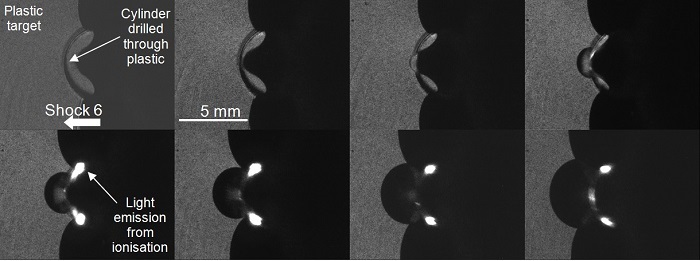5th JULY 2016
First Light Fusion Ltd (Oxford, UK) has invested in a Specialised Imaging SIMX16 ultra high-speed framing camera to study and develop its alternative approach to inertial confinement fusion based upon an aspherical cavity collapse process.
Founded in 2011 as a spin-out from the University of Oxford (UK) - First Light Fusion is developing a novel process for achieving practical and affordable fusion energy. It is predicted that global energy demand will increase by 50% by 2030 thus research and development to create working fusion reactors is taking on increasing importance. First Light has discovered new implosion processes that can achieve the high temperatures and compression necessary for fusion reactions and other valuable applications. The company’s approach has the potential to dramatically shorten the timescale and cost of achieving practical and affordable fusion energy.
Hugo Doyle, a physicist at First Light Fusion commented “ We use an 8 km/s gas gun as a research tool to drive the aspherical collapse process. This allows us to reach fusion relevant temperatures and densities by taking advantage of the resulting instabilities. With interactions taking place in less than 100 nanoseconds we required a high performance optical imaging camera with exposure time at an even faster rate to remove motion blur and allow us to benchmark our predictive hydrodynamic simulations. We chose the SIMX16 camera not only because it can capture images at 1 billion frames / second but it uniquely allows us to acquire 16 images with independent control over the timing and gain for each image. This has allowed us to build a film in a single shot of several events of different brightness. This advantage is particularly important to us as our experiments have a low repitition rate. Previously to obtain this data we would have had to carry out 16 shots and interpolate the data - a long process. Currently we use the SIMX16 camera with a backlighting laser to image through our target and watch the shock propogate and interact with our targets. This allows us to watch the overall hydrodynamics of the process and compare with simulations. In future we plan to connect the SIMX16 to our visible light spectrometer and obtain light emission information enabling us to see the temperature of our plasma over time and space”.
In conclusion Hugo Doyle said “The support from Specialised Imaging is first-class. When contacting them for assistance they often turn up the following day to check that everything is working optimally. We value their product and support so much that this is the second SIMX camera we have used”.
Capable of capturing up to 32 images at 1 billion frames per second - Specialised Imaging SIM ultra high-speed framing cameras are able to capture visual data from even the most fleeting of phenomena. Unique technology enables SIM ultra high-speed framing cameras to simultaneously capture images on different selected channels. Unlike traditional ultra fast framing cameras the optical design of SIM cameras provide the choice of up to 16 separate optical channels without comprising performance or image quality.
For further information on First Light Fusion and its novel aspherical cavity collapse fusion process visit www.firstlightfusion.com. For further information on SIM ultra high-speed framing cameras please visit www.specialised-imaging.com

Ultra High-Speed Imaging Helps Development of Alternative Fusion Process

Eight frames from a prototyping shot using the laser backlit SIMX16 camera. A 6 km/s projectile from a gas gun impacts on a plastic cube with a 5 mm cylinder drilled out. The planar shock is seen to form a jet like structure as it propogates across the cylinder. Upon hitting the rear surface a small volume of gas is compressed and ionised causing light to be emitted.











